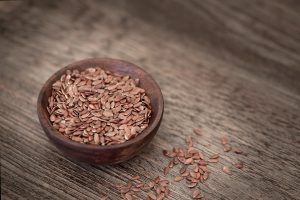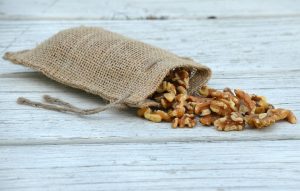25 Surprising Facts About Rheumatoid Arthritis


25 Facts About Rheumatoid Arthritis (RA) Everyone Should Know
Rheumatoid arthritis is an illness that’s widely misunderstood. I believe this is partly due to the fact that many confuse it with osteoarthritis (OA). This mix-up leads people to believe rheumatoid arthritis is caused by aging.
Rheumatoid arthritis (RA) is in no way “normal” aging and shouldn’t ever occur at any point in a healthy person’s life!
Rheumatoid arthritis is an autoimmune disease – meaning the body’s immune system is attacking itself – in the case of RA the immune system attacks a person’s joints.
Almost 1.5 million Americans have rheumatoid arthritis and it’s on the rise. Unfortunately, modern medicine doesn’t have much to offer for reversal of this terrible condition. However, functional medicine and full body integrative and holistic approaches have resulted in full recoveries and promising outcomes.
I am a perfect example of this. I was diagnosed with Rheumatoid Arthritis (I was also given many other additional diagnoses – another blog on this later) more than a decade ago. When modern medicine had no answers for me other than prescribing toxic immunosuppressive drugs and steroids, I voluntarily chose not to use those. As a practicing Internal medicine doctor who had a special interest in Rheumatology, I knew all too well, the terrible side effects and long term health consequences of these drugs. I was determined to find other answers!
Against conventional wisdom, I decided to be my own guinea pig and looked for other safer but effective alternatives. I researched and studied the fields of nutrition, and Integrative, Holistic, and Functional Medicine. I trained and became board certified in these, using all that I learnt, first on myself. It was trial and error at that point for me but I eventually healed myself from this crippling disease and from all other diagnoses that conventional medicine had given to my wide range of chronic symptoms!
My health completely recovered, and I no longer carry the clinical or lab diagnosis of RA, nor do I suffer from the pain or the disabling fatigue which is characteristic of this disease. In fact, I feel more energetic and vibrant than I did even in my 20s. I now use the same healing modalities and step-wise approach that worked for me, on my patients to help them in their recovery process.
As with everything else in life, we are all individuals with unique and varied characteristics, so no one size of treatment can fit all. Everyone with RA will have different root cause(s). I help my patients and clients find their particular root causes and then use a very personalized treatment approach that is right for their body.
In an effort to clear the confusion and misunderstanding surrounding rheumatoid arthritis, I’ve compiled 25 facts about rheumatoid arthritis that everyone should know. RA is a condition that can strike any person at any age – and it’s best to know these important facts.
1. Rheumatoid arthritis (RA) is very different from osteoarthritis (OA)
RA is an autoimmune disease while osteoarthritis is caused by erosion of the cartilage and bones due to aging, overuse or obesity. Because these conditions are completely different, so are their treatments and it is important not to confuse the two.
2. Rheumatoid arthritis is not ‘normal’ wear and tear of the joints
Rheumatoid arthritis occurs when the body’s immune system attacks its joints. This attack results in painful inflammation of the hands, feet, knees and other joints. RA can also impact other tissues in the body such as the heart, lungs, mouth, and eyes.
3. Rheumatoid arthritis is more prevalent now than ever before
Many articles on RA like to cite the fact that there’s very little evidence RA existed before the 1500’s, however that fact remains uncertain. What we do know, is RA is more prevalent now than ever before and it’s incidence is on the rise. This fact leads many to believe it is a disease caused primarily by environmental factors such as diet and toxins.
4. Children can develop Rheumatoid Arthritis
It’s possible for children to develop RA -known as Juvenile Rheumatoid Arthritis (JRA) – because it’s an autoimmune condition, not caused by aging. In fact, children as young as five years old can develop RA, which is a deeply troubling to witness.
5. Rheumatoid Arthritis is usually worst in the hands and feet
Though RA can impact any joint and many tissues in the body, it’s most common in the hands and feet. RA attacks the synovial lining between the bones of a joint, causing it to become inflamed, and ultimately damaging the tissue. Over time, RA can cause deformity to the affected joint.
6. Women are three times more likely to develop RA
For reasons that are not fully understood, women are three times more likely to develop RA than men. It is thought that hormones may play a role. Also, the prevalence of RA among women is on the rise.
7. Geography influences RA risk
RA is more common in people who live further from the equator, which suggests that adequate sunshine could help reduce RA risk, which leads me to my next point…
8. Vitamin D reduces risk of developing RA
Sufficient vitamin D significantly reduces your risk of developing RA and sunshine is your best source of vitamin D. Vitamin D has been linked to a reduced risk for nearly all autoimmune disease, so it’s a good idea to daily get about 20 minutes of sunshine, before applying sunscreen (without burning of course). If you have the ability to test your vitamin D levels, please do so and take supplemental Vitamin D under supervision. In my practice I use different strengths of Vitamin D based on my patient’s levels.
9. Exercise is usually recommended in RA
Surprising to some, physical therapy has been shown to improve symptoms of RA. Decades ago, doctors believed exercise would put unnecessary stress on joints and recommended against it. This belief is not true and proper exercise with rheumatoid arthritis is now encouraged.
10. Diet is a vital part of treatment of Rheumatoid Arthritis
Anti-inflammatory diets low in gluten, sugar, processed and fried foods are an integral part of the functional medicine approach to RA. I would recommend working with a Functional medicine doctor and getting detailed food, nutritional and gut assessment so your individual causes for RA can be specifically dealt with.
11. Chronic inflammation is a major component of RA
Rheumatoid arthritis goes hand-in-hand with chronic inflammation. This means you can do yourself a world of good by incorporating anti-inflammatory practices in your life through diet, by reducing the burden of toxins in your body, and by targeted supplementation. The fire needs to be quenched!
12. Muscle atrophy is a concern in RA
Due to the lack of appetite that accompanies RA, coupled with the misguided but common belief that exercise will make RA worse, many people in the past suffered from muscle atrophy. These issues led to the nickname “wasting disease” because those with RA were often rail-thin and “wasting away.” A typical complaint is difficulty opening jars. Adding a daily protein drink or two to your nutritional supplementation can most certainly help replenish muscle strength. . My favorite protein powders are ones which also help gentle detox of the liver and the body.
13. Loss of appetite is common in RA
Due to inflammation of the gut, many with RA experience a strong loss of appetite, which contributes to weakness and muscle atrophy. The best way to fight this is through healing the gut and reducing inflammation.
14. A genetic risk factor called a “shared epitope” in RA
A shared epitope (SE) is a genetic variant that increases the likelihood of developing RA when present, in fact some studies suggest that SE is the single most significant genetic risk factor for RA. Though there’s a genetic predisposition for RA, most believe risk is more associated with environmental factors. Remember, genes are loaded guns but environmental exposures hold the trigger!
15. Heart disease is a problem for RA patients
Having RA significantly increases your risk for developing cardiovascular disease and having a heart attack. This is likely due to the characteristic systemic inflammation present in both conditions.
16. Diabetes risk is higher in RA patients
RA increases the risk of many illnesses, including diabetes, though this could also be caused by the conventional RA treatments, which quite often include intermittent or chronic steroid use. Steroids increase the risk for diabetes. Opting for a functional medicine approach to rheumatoid arthritis could reduce this risk.
17. Fibromyalgia risk is higher in RA patients
There is an increased risk for developing fibromyalgia in patients with RA. Suffering from a combination of these two illnesses can lead to chronic pain, severe depression, fatigue, as well as memory and cognitive issues.
18. Lung disease is a common complication in RA patients
Interstitial lung disease, a serious lung disease can be a frequent complication of RA when the disease activity is not properly controlled, in fact after joints, lungs are the second most common organ to be affected by this disease. Serious respiratory conditions, infections and pneumonia can also occur due to conventional treatments which suppress the immune function; or due to lifestyle habits such as smoking. Any symptom of shortness of breath should be properly investigated.
19. Pregnancy can temporarily improve RA symptoms
Pregnancy often improves symptoms of many diseases, including RA. I believe this is because of the elevated anti-inflammatory elements present in the body during pregnancy, such as the DAO enzyme. However, after a person with RA gives birth, they could experience a flare-up and should plan with their doctor accordingly. Postpartum follow up of RA and for that matter any autoimmune condition is crucial.
20. Giving birth reduces risk for developing RA
Though the reason behind this is not fully understood, research has shown that giving birth reduces a woman’s overall risk of developing RA compared with someone who has never given birth.
21. Smoking increases RA risk and worsens symptoms overall
Smoking cigarettes increases a person’s risk for developing RA. Additionally, smoking cigarettes is a serious trigger for a flare of RA and can worsen symptoms overall.
22. It’s unclear whether alcohol is bad or good for RA
Studies have been published suggesting some alcohol is both good and bad for people affected by RA. It’s my recommendation that you consume as little as possible because alcohol makes it difficult for your body to work on ridding itself of toxins in your everyday life that could be contributing to your RA.
23. Pollution increases Rheumatoid Arthritis risk
Pollution is known to cause inflammation in the body, so it’s no surprise that researchers found women who lived within a third of a mile of a major highway had higher prevalence of systemic inflammation and RA.
24. Psychological stress can have a role in RA
Stress is one of the factors that may not only cause and but also exacerbate the progression of chronic inflammatory diseases such as RA. Relapses are common under conditions of emotional stress. Treatments based on mindful awareness and acceptance therapies lead to reductions in daily pain-related sense of doom and disability, fatigue, as well as stress-related anxiety in RA patients. A holistic mind-body approach is paramount along with other Functional medicine treatments for RA.
25. Functional medicine solutions are promising in RA
Steroids and NSAIDs (some of the conventional treatments for RA) are not a good long term treatment plan. Not only do they not offer long term solutions, they are harmful to the gut and the immune system! They work against the very systems that need healing.
Instead try a functional medicine approach to RA treatment with your Functional Medicine doctor, which includes:
- Anti-inflammatory diet – Free of gluten, sugar, fried, and processed foods.
- Reducing toxin burden – Cleaning up your household products and cosmetics is a good start. Only use ‘clean’ personal care products without hormone dysrupting chemicals.
- Healing a leaky gut – You’ll need to repair your gut lining to help your immune system regain strength. I use a special gut support powder, digestive enzymes and probiotics to balance the gastrointestinal tract function.
- Check for bacterial and yeast overgrowth – work with your Functional Medicine doctor to diagnose and treat these.
- Check for mycotoxins – Your doctor can also test you for mycotoxins which come from mold. Read my article here on mold clean-up..
- Heal any infections – Infections with viruses, yeast, parasites and bacteria can mess with your gut health. Among other infectious causes, Epstein-Barr virus is thought to be a trigger of RA.
- Supplementation – Omega-3s, probiotics, vitamin D3, bioavailable forms of curcumin are some of the simple ways to fight the chronic inflammation caused by RA.
Rheumatoid arthritis is a debilitating disease but there are better solutions beyond prescriptions. Reach out to your functional medicine doctor if you or someone you love suffers from rheumatoid arthritis.
Please share this article to help dispel common myths surrounding rheumatoid arthritis.
Please also share how you manage your disease and help others learn from your experiences.
Resources:
https://www.ncbi.nlm.nih.gov/pubmedhealth/PMHT0024678/
http://www.arthritis.org/about-arthritis/types/rheumatoid-arthritis/what-is-rheumatoid-arthritis.php
https://www.ncbi.nlm.nih.gov/pmc/articles/PMC3119866/
https://www.niams.nih.gov/health_info/Juv_Arthritis/default.asp
https://www.rheumatoidarthritis.org/ra/
https://www.ncbi.nlm.nih.gov/pubmed/14730601
https://www.ncbi.nlm.nih.gov/pubmed/28808949
https://www.ncbi.nlm.nih.gov/pmc/articles/PMC3766928/
https://www.ncbi.nlm.nih.gov/pmc/articles/PMC2921962/
https://www.ncbi.nlm.nih.gov/pubmed/24736263
https://www.ncbi.nlm.nih.gov/pmc/articles/PMC3890244/
https://www.cdc.gov/arthritis/basics/rheumatoid-arthritis.html
https://www.ncbi.nlm.nih.gov/pmc/articles/PMC4284707/
https://www.ncbi.nlm.nih.gov/pmc/articles/PMC2717131/
https://www.ncbi.nlm.nih.gov/pubmed/24850878
https://www.ncbi.nlm.nih.gov/pubmed/28638686
https://www.ncbi.nlm.nih.gov/pubmed/25365778
https://www.ncbi.nlm.nih.gov/pmc/articles/PMC1526553/
Dr. Manisha Ghei October 3rd, 2017
Posted In: Blog Post, Functional Medicine, Functional Nutrition, Integrative Medicine, Rheumatoid Arthritis, Uncategorized
Tags: Autoimmune, Autoimmune disease, Autoimmune MD, Autoimmunity, Chronic fatigue syndrome, fibromyalgia, functional medicine, heart health, Inflammation, Joint, nutrition, OA, Osteoarthritis, RA, Rheumatoid Arthritis, supplements, women
Your Ultimate Hurricane Clean Up Guide

Your Ultimate Hurricane Clean Up Guide – From Your Home to Your Body
Now that most of Hurricane Harvey’s and Irma’s waters have subsided and we are left to assess the damage, an important time presents itself. Hurricane clean-up is more than gathering debris and clearing out the mud that remains, it involves protecting ourselves from current and future threats. This most certainly includes invisible killers released by the toxic mold that creeps into water damaged buildings and wreaks havoc on our health.
When we think of hurricane clean-up, many don’t realize the significance mold has on our health. It’s hard to keep this invisible threat at the forefront of our efforts when there’s so much wreckage in our path, but we must.
Mold remediation is possibly the most important of aspect of hurricane clean up.
If mold remediation is not done properly and regularly checked for over the years, you run the risk of making yourself and your family very, very sick. As a Functional Medicine physician who helps people with serious chronic diseases I see this all too often!
Now that you’re safe from the immediate dangers of the storm, I cannot emphasize enough the importance of cleaning up from this hurricane with mold prevention and remediation as priority number one.
Is mold a new health concern?
Mold has always played a role in human health, however it’s only in the past few decades that we’ve started building houses out of what’s essentially paper. Drywall and wood are ideal hosts for robust mold blooms.
All mold requires moisture to grow and thrive. It’s this combination of perfect host materials and high moisture content due to flooding that makes hurricane damaged building a breeding ground for toxic mold. Unfortunately, the Texas and Florida heat exacerbates this situation.
How mold works
Mold’s role in nature is that of a decomposer. Mold grows on dead organic matter, such as leaves and trees, breaking it down. Mold reproduces through the release of tiny airborne spores. These spores are invisible and can be toxic.
Mold toxins have been linked to a whole host of medical issues including autoimmune diseases, such as rheumatoid arthritis, DNA damage, neurotoxicity, and myelin breakdown which can contribute to Alzheimer’s, Parkinson’s, and multiple sclerosis. In fact, Inhalational Alzheimer’s Disease (IAD) is a subtype of Alzheimer’s caused by biotoxins, which has only recently been identified.
The mitochondria of our cells evolved from bacteria, and bacteria’s natural enemy is mold and the toxins mold releases. So, it makes sense that certain molds we encounter would carry the unique ability to damage our mitochondria. It’s how we develop antibiotics (think Penicillin). We use mold to create antibiotics responsible for killing harmful bacteria (and sometimes inadvertently we end up also killing the good bacteria).
Properly cleaning up after a hurricane is critical to preventing damaging mold from growing in your home. It may seem daunting to take the extra steps necessary for killing and preventing future mold growth, but your health and the health of your family depends on it.
Symptoms of mold exposure
Mold can move in surprisingly quick after a flood. In fact, it can already be there when you start the initial work on your house, only a couple of days after the storm.
The symptoms of mold exposure include debilitating fatigue and mood swings, so it could be possible to mistake mold exposure symptoms due to the exhaustion as well as the emotionally taxing situation you’re in, but paying close attention to your new symptoms is the key. The signs and symptoms of mold exposure can include:
- Chronic fatigue
- Muscle weakness and pain
- Anxiety
- Mood swings
- Difficulty concentrating
- Poor memory
- Chronic headaches
- Bruising
- Nosebleeds
- Vertigo
- Stiff joints
- Tingly legs and arms
- Insatiable thirst
- Metallic taste
- New allergies
- Rheumatoid arthritis
- Crohn’s disease
- Hashimoto’s thyroiditis
- Other Autoimmune disease(s)
The tricky thing about mold is its symptoms present differently for everyone. This is why it is so hard to diagnose early.
To further complicate matters, there’s an actual gene that 25 percent of the population carries which makes them incredibly sensitive to mold. The HLA-DR gene prevents the individual’s body from successfully ridding itself of toxins. Think of the canaries in a coal mine! I should know as I surely am one!
Often, a family doesn’t realize there’s mold in the house until a person with this gene becomes very ill. Whether or not you have the HLA-DR gene, you should thoroughly clean your house using proper mold remediation protocol. Just because you’re not extra sensitive to mold toxins doesn’t mean you aren’t negatively impacted by them, it just might take you longer for you to notice.
Cleaning up after a flood
Cleaning up after a flood should be taken very seriously. There’s a chance mold has already moved into your home. As you rip out drywall and get your home ready to rebuild, it’s safest to assume mold has already moved in and take necessary precautions.
Also, if you are planning on rebuilding, you should have your home tested by a qualified mold inspector. You’ll need an ERMI test done on your house before any remodeling begins or you run the risk of covering up mold growth.
Remember, you are cleaning up to prevent the growth of a substance that can cause you and your loved ones’ serious long term illnesses, and it takes less than a day for mold to start growing. Be vigilant.
Here’s what you should do when cleaning up a flooded building:
- Wear a Tyvek suit and face mask when cleaning up. You should use either a full-face mask or a half-face mask with goggles. Moldex makes masks specifically for mold clean up.
- Everything your Tyvek suit touches when you leave the house could become contaminated – this includes your car. Remove your Tyvek suit and throw it away or leave it outside the house each time you leave the contaminated building.
- If you start feeling ill, tired, crave sugar or are overly emotional while you’re cleaning, you should leave the house immediately and upgrade your protective equipment before returning to work.
- You’ll need to clean everything with a suitable cleaner (NOT bleach) and follow up with an encapsulant. Encapsulants are cleaning products with fungicides that prevent mold from coming back.
Porous materials, such as wood, are of greater concern when cleaning, but for the sake of simplicity I’m going to recommend you use the same cleaning procedure for all surfaces, and this does NOT include bleach. Bleach won’t kill the mold in porous materials and it will only cause future mold to grow back stronger.
Instead do this:
A formula I have used in my home in the past when I’ve had minor leaks:
- 1 gallon hot water
- ½ cup white vinegar
- 1 cup Borax
Mix well. Put above mixture in a spray bottle. Add 10-15 drops of Melaleuca essential oil to the spray bottle each time you refill it. Shake well and spray on affected surfaces.
(Consider diffusing clove, melaleuca, eucalyptus, lemon, and cinnamon essential oils in multiple diffusers throughout your home)
-
Follow up with an encapsulant, such as Caliwel or Concrobium.
- Careful not to cross-contaminate. This means anything from your flooded home should not be taken into a clean environment (your car).
- You’ll need to seriously consider what’s worth putting your health in danger as you go through all the porous items from your flooded home. This means clothing, curtains, books, furniture, bedding, photos and more.
Fabric should be thrown away when possible. If you must keep something, have it dry cleaned. Photos should be laminated or reprinted.
After you’ve gone through this process and before you begin remodeling, you should have an ERMI test done by a mold professional.
You should also have your home (and yourself) tested for mold allergy as well as mold toxins (known as mycotoxins) over the next year or two – possibly longer, especially if vague and troublesome symptoms persist.
Supporting your immune system during flood clean up
While you’re cleaning up a flood damaged home, you should try to support your immune system as best as you can. Your body is going to be exposed to all kinds of chemicals, toxins, and potentially mold, so it will need any extra support you can offer.
The four immune system supporting recommendations I suggest during clean up include:
- An immune boosting diet
- Reducing your toxic burden
- Supplementation
- Be good to yourself/stress reduction
First, I recommend an immune boosting diet.
This means a nutrient-dense diet of healthy fats, proteins, and plenty of vegetables.
Avoid sugar and carbs because they promote inflammation and make it harder for your mitochondria and immune system to do their jobs. Instead healthy fats and proteins should be your main source of fuel.
Also, I recommend avoiding alcohol during clean-up because your liver and immune system need to be freed up to detox your body from more important toxins.
Second, reduce your toxic burden.
Outside of home clean-up, consider other sources of toxins you’d benefit from removing from your life. You can reduce toxin burden by eliminating items such as:
- Harmful cleaning products
- Toxin-containing personal care products
- Fish high in mercury and other metals
- Paints with VOCs
- Non-stick pans
- Fried and charred food
- Artificial sweeteners
- BPA-containing plastics
- Metal dental fillings
Yes, some of these are for later but I just want you to have a full resource.
As a side note, candida overgrowth in your body increases your toxic burden too. I often get asked if candida or yeast overgrowth is because of mold, so clarifying here:
If you have symptoms of candida overgrowth, it is not due to inhaling it in your home air. You may have toxic mold in your house but the air in your home does not typically contain much Candida albicans. However, exposure to mold can seriously weaken the immune system making our body more prone to candida flares within our digestive system (candida is present in small amounts in all of our gastrointestinal systems), which when severe can lead to systemic and widespread symptoms in the body.
In addition, mold exposure can make one more sensitive to all kinds of fungi (candida is a fungus) and mold. Developing an allergy to mold leads to hypersensitivity to candida and starts a viscous cycle of inflammation and immune system dysfunction with far reaching consequences.
As a free gift please access my Candida Control Foods & Remedies Guide. My hope is that in it you will find some useful strategies to prevent, and get rid of candida overgrowth and the chronic symptoms it can cause. Supporting your body with these strategies will help in re-balancing your immune system while you deal with the effects of water damage.
Third, I recommend adding immune supporting supplements to your diet.
Immune system boosting supplements include:
- A balanced multivitamin. Choose one with iron if you are a menstruating woman or have a known iron deficiency. Choose iron free for everyone else.
- Vitamin B complex (for methylation support)
- Vitamin C (with bioflavonoids – needed for a healthy immune system)
- Vitamin D (to support the immune system and protect against disease development)
- Vitamin E (defense against free radicals). Choose one with mixed tocopherols
- Probiotics (improves gut health and reduces inflammation). Choose ones with multiple strains of beneficial bacteria.
- Glutathione (master antioxidant of the body, aids in defense against free radicals). Choose easily bioavailable forms like S-acetyl glutathione or precursors of glutathione like N acetyl cysteine (NAC).
- Zinc (important for thyroid and immune system health)
- Omega 3 in a balanced ratio (reduces inflammation, immune support) with some beneficial omega 6s and 9s in your diet as well. Here is an article I wrote about Omegas.
- Magnesium citrate (important for overall health and prevents constipation). During this time it’s super important your body is able to detoxify efficiently, which is why it’s critical you avoid constipation at all costs.
- If you have 2-3 bowel movements a day already, you can choose a chelated form of Magnesium glycinate instead. Most of us are low in magnesium and it can be a crucial nutrient especially during stressful periods.
- Selenium (reduces inflammation, supports thyroid function, and reduces free radical stress) You can get selenium from a good quality multivitamin, and also eat a couple of brazil nuts daily.
- liver detox support with a combination formula with milk thistle, n-acetylcysteine, alpha lipoic acid, calcium-D-glucarate, turmeric, resveratrol, methylated B vitamins, and essential trace minerals etc.
- hormonal detox support– Yes, your own hormones can become toxins if not eliminated properly from the body.
- Activated charcoal (defense against free radicals)
I added links to supplements I’ve formulated over the years because I know they are of the highest-quality, but honestly please buy these from any source your know to be trustworthy and professional grade as well as GMP certified. It really doesn’t matter where you get these from, so long as you’re getting them!
It’s so important to take care of yourself right now!
And finally, be good to yourself.
You are going through one of the most emotional and physically taxing times of your life right now.
It’s important for your health that you manage stress levels and take care of your emotional wellbeing. It may seem like there’s not enough time for these practices but your long-term health will thank you. Try and make time for:
- Quality family time
- High-quality sleep
- Gratitude
- Exercise
- Meditation
- Yoga
- Journaling
- Things that make you happy
An immune boosting diet, reducing toxin burden, supplementation, and self-care are all critical to your overall wellbeing right now.
Working with your functional medicine doctor
If you’re working in a water-damaged home or moving back into a water-damaged home, you need to be more vigilant than you’ve ever been before about your health. The problem with mold is it’s can be almost impossible to see, so paying careful attention to your health is your best barometer for mold toxin impact.
I recommend making an appointment with a functional medicine doctor who specializes in chronic disease management, autoimmune disease(s) and mold toxin exposure. Tell your doctor, you and your home (or work) have been impacted by a flood and you want to pay close attention to your mycotoxin levels and any preliminary symptoms of impending autoimmune disease.
Your functional medicine doctor can test you for mycotoxins and help you develop a preventative plan for mold exposure. Even if your home is cleared for mold and your initial tests come back clean, I recommend checking everything again 3, 6, 9 months and a year later.
After the initial year of checks, I recommend health and home checks every six months to once a year at least after that if your home has been flooded. The reason I recommend such frequent checks is because the earlier you catch mold, the more efficiently and effectively it can be dealt with.
Remember, we’re talking about a substance capable of causing autoimmune diseases, such as multiple sclerosis, rheumatoid arthritis, hashimoto’s thyroiditis, DNA damage, neurotoxicity, Alzheimer’s, and other neuro-degenerative diseases.
Mold is not to be taken lightly.
It’s personal for me!
My neighborhood was flooded during Hurricane Harvey. My family and I had a very close call. Although we don’t live in a flood zone, we were suddenly placed under mandatory evacuation orders on the second day of the storm. To evacuate or to stay put was one of the hardest decisions that my husband and I had to make for our family’s safety and well-being.
After a lot of contemplation we decided to move everyone to the second floor of the house along with essential supplies. The reason for this decision was the ill health of my mother who is physically disabled, with early dementia and lives with us. We couldn’t attempt to evacuate in a car with her and risk getting stuck enroute due to road and highway flooding and closures. That would have been worse! So we stayed…
The water came all the way up to the very edge of our home but we did not have any flooding; unfortunately many of our neighbors weren’t as fortunate. Hurricane Harvey has taken a physical and emotional toll on our community. I myself felt like I was dealing with anxiety, sleep issues, and some form of PTSD for many weeks after. I cannot fathom how those who lost everything must feel.
While I continue to send thoughts and prayers their way, and have continued to collect and donate food and supplies to shelters and individual families in need, I do also hope to spread the word about flood clean up and mold toxin exposure so we prevent future illnesses.
Mold clean up and prevention should be at the forefront of our concerns during the recovery process from the devastation that a hurricane leaves behind.
While I write this, my thoughts and prayers are with all those who are still facing the flash flooding and devastation from Hurricane Maria.
Please share this article with your loved ones who’ve been affected by the recent hurricanes.
My prayers continue to go out to all those affected by the recent hurricanes Harvey, Irma and Maria and others in the past.
Resources:
https://www.ncbi.nlm.nih.gov/pmc/articles/PMC164220/
https://www.ncbi.nlm.nih.gov/pubmed/15143854
https://www.ncbi.nlm.nih.gov/pmc/articles/PMC2367102/
https://www.ncbi.nlm.nih.gov/pmc/articles/PMC3179161/
https://www.ncbi.nlm.nih.gov/pubmed/10091857
https://www.ncbi.nlm.nih.gov/pmc/articles/PMC4789584/
http:/www.survivingmold.com/diagnosis/ermi-testing
https://www.amazon.com/s/ref=nb_sb_noss_2?url=search-alias%3Dindustrial&field-keywords=moldex+mask
The information offered by this blog is presented for educational purposes. Nothing contained within should be construed as nor is intended to be used for medical diagnosis or treatment. This information should not be used in place of the advice of your physician or other qualified health care provider. Always consult with your physician or other qualified health care provider before embarking on a new treatment, diet or fitness program. You should never disregard medical advice or delay in seeking it because of any information contained within this blog. © Praana Integrative Medicine & Holistic Health Center, LLC. All rights reserved
Dr. Manisha Ghei September 26th, 2017
Posted In: Blog Post, Flooding, Functional Medicine, Hurricane recovery, Mold
Tags: Autoimmune disease, borax, candida, candida overgrowth, detox, diet, encapsulants, flood, flooding, floodwaters, Florida, Harvey, Houston, Hurricane, Hurricane clean up, Hurricane Harvey, Hurricane Irma, Hurricane Maria, Hurricanes, immune system, Irma, Maria, mold, mold clean up, mold exposure, mold growth, mycotoxin, Puerto Rico, toxic mold, toxins, yeast overgrowth
8 Essential facts about Omegas -Essential Fatty Acids (EFAs)

Essential Fatty Acids (EFAs) – Essential to Brain Health
I’m often asked what are the few nutrients I think are absolutely imperative and essential for good health especially in this modern world. One of the top nutrients in my list is Omega Essential Fatty Acids. Every patient who comes into my practice gets their Omega 3 levels and the ratio of Omega 3s to other omegas, like 6s, 9s etc tested and an appropriate individualized diet and supplementation (if required) plan created for them.
Decades of study and countless books have gone into exploring Omega-3 and the role it plays in our physical and mental health.
Here are 8 Essential Facts about this ESSENTIAL substance.
1. Omega-3 is called “essential” because it’s necessary for our health, but we cannot make it on our own.
2. One essential Omega-3 fatty acid is a substance called α-linolenic acid (ALA). Our body can use ALA to make two other essential fatty acids: DHA (docosahexaenoic acid) and EPA (eicosapentaenoic acid). However, we don’t make enough to meet daily needs for optimal health and the conversion of ALA to DHA and EPA is not efficient enough in most humans.
If you are deficient in Vitamin Bs of various kinds, Vitamin C, minerals like Magnesium and zinc you will not optimally convert ALA into DHA and EPA.
Have your physician test you for optimal levels of these nutrients and adjust your dietary plan and your supplement schedule to optimize the levels of these key supportive nutrients.
You may benefit from supplementation with:
- a B complex containing activated forms of B vitamins,
- a highly absorbable and bio-available form of magnesium (that does not cause diarrhea)
- a highly absorbable and bio-available form of zinc
- a highly absorbable and bio-available form of Vitamin C with bioflavanoids
- A comprehensive Multivitamin and Multimineral supplement. If you’re a menstruating woman, you may wish to take the version that contains iron as well.

3. Omega-3 is critical for preventing symptoms of chronic illness, such as inflammation, chronic fatigue, joint and muscle pain and poor elimination of toxins.
4. The brain thrives on Omega-3. Without enough, we can experience learning problems, memory issues, brain fog, ADHD symptoms and other neurological symptoms. Proper levels help protect us from Alzheimer’s Disease. Balanced omega fatty acids are crucial in cardiovascular health and healthy blood pressure maintenance and insulin and blood sugar balance.
5. Food is a great source of Omega-3. Consider fatty fish like salmon, tuna, halibut, krill, flaxseed, walnuts and chia seeds (the latter 3 however give us ALA which needs to be converted to DHA & EPA).
6. It’s difficult to get sufficient amounts from food alone. Most Americans consume a daily average of 130 mg EPA + DHA – way below the recommended 1000-2000 mg. Consider adding a supplement to your diet. The Omega 3 supplement my family and I use, and I recommend to patients in my practice is International Fish Oil Standards (IFOS) five-star certified, which assures the highest level of purity, stability, and potency in fish oils. Each dose of this concentrated fish oil provides a whopping 900 mg of EPA and DHA in one softgel. Always check the the EPA and DHA content at the back of your bottle, as many times manufacturers will list a certain mg of fish oil on the front label of the fish oil bottle and it does not provide the accurate amounts of EPA and DHA that each serving has. This can mislead the buyer.
7. Acquiring Omega-3 must be done in a focused fashion, with attention paid to the balance between Omega-3 and Omega-6 (a group of fatty acids linked to increased inflammation). An imbalance can adversely impact well being and brain health.
8. Not all Omega 6s are bad! One known as DGLA (Dihomo-gamma-Linoleic Acid) is an antiinflammatory Omega 6 fatty acid. Other ones known as LA (Linoleic Acid) and AA (Arachindonic Acid) can be inflammatory in high amounts or when not in balanced amounts compared with DGLA. 
In my testing I look at individual levels of these key Omega 3 and 6 Fatty Acids but also the ratio of Linoleic to DGLA as seen in the image above. A simple blood test can give me all of the above information.
Consult your Functional Medicine and / or Integrative Holistic Medicine physician to assess your intake, test your levels, and explore ways to help you protect your health and cognitive function with essential Omegas.
References:
-
University of Maryland CAM Database Online. “Omega-3 Fatty Acids” Accessed 7 Nov 2016: http://umm.edu/health/medical/altmed/supplement/omega3-fatty-acids
-
Assisi A., Banzi R., Buonocore C., et al. “Fish oil and mental health: the role of n-3 long-chain polyunsaturated fatty acids in cognitive development and neurological disorders.” Int Clin Psychopharmacol. 2006 Nov;21(6):319-36. Accessed 7 Nov 2016: https://www.ncbi.nlm.nih.gov/pubmed/17012979
-
Ricardo U., Dangour, A.D. “Nutrition in Brain Development and Aging: Role of Essential Fatty Acids” Nutrition Reviews (May 2006)64 (suppl 2) S24-S33; DOI: 10.1111/j.1753-4887.2006.tb00242.x http://nutritionreviews.oxfordjournals.org/content/64/suppl_2/S24
-
Bourre, J.M. “Effects of nutrients (in food) on the structure and function of the nervous system: update on dietary requirements for brain. Part 2: macronutrients”. J Nutr Health Aging. 2006 Sep;10(5):386-99. Accessed 7 Nov 2016: http://www.bourre.fr/pdf/publications_scientifiques/260.pdf
-
NutritionData.com. Foods Highest in Total Omega-3 Fatty Acids. Accessed 7 Nov 2016. http://nutritiondata.self.com/foods-012140000000000000000.html?maxCount=20
-
Freund-Levi Y, Eriksdotter-Jonhagen M, Cederholm T, et al. “Omega-3 fatty acid treatment in 174 patients with mild to moderate Alzheimer disease: OmegAD study: a randomized double-blind trial.” Arch Neurol. 2006 Oct;63(10):1402-8. Accessed 7 Nov 2016: http://www.utdallas.edu/~tres/papers/freund-levi.2006.pdf
The information offered by this blog is presented for educational purposes. Nothing contained within should be construed as nor is intended to be used for medical diagnosis or treatment. This information should not be used in place of the advice of your physician or other qualified health care provider. Always consult with your physician or other qualified health care provider before embarking on a new treatment, diet or fitness program. You should never disregard medical advice or delay in seeking it because of any information contained within this blog. © Praana Integrative Medicine & Holistic Health Center, LLC. All rights reserved
Dr. Manisha Ghei April 16th, 2017
Posted In: Blog Post, Food, Functional Medicine, Integrative Medicine
Tags: ADHD, allergies, antioxidant, arthritis, asthma, blood pressure, cancer, cholesterol, Chronic fatigue syndrome, dementia, Diabetes Mellitus, fibromyalgia, functional medicine, healthy heart, heart healthy foods, Inflammation, Insulin, Memory, nutrition, Omega 3, vascular health
A Functional Medicine Physician’s approach to an Overburdened Detoxification System

 You must have heard that “we are what we eat”, but are we really just that? Actually “we are what we eat (or drink), breathe, breakdown, digest, absorb (from our gut and skin), and cannot eliminate from our body, whether it’s through our thoughts, skin, breath, urine and stool! Even though we are designed to have built-in detoxification and elimination pathways, they can get overwhelmed with years of toxin exposures which our bodies are now having to handle more so than ever before in our evolution history.
You must have heard that “we are what we eat”, but are we really just that? Actually “we are what we eat (or drink), breathe, breakdown, digest, absorb (from our gut and skin), and cannot eliminate from our body, whether it’s through our thoughts, skin, breath, urine and stool! Even though we are designed to have built-in detoxification and elimination pathways, they can get overwhelmed with years of toxin exposures which our bodies are now having to handle more so than ever before in our evolution history.Below is a quick check list that I keep in my mind of patients who might have signs of an overburdened detox system.
While the list below is by no means exhaustive, some general evaluation guidelines are:
1. Detailed history and intake with the help of Medical Symptom Questionnaires, Toxicity and Exposure questionnaires, Environmental and Occupational Exposure Questionnaires.
2. Detailed Nutritional, Dental and Physical examination.
3. Conventional Lab tests: can be done from local labs like Labcorp/ Quest etc
Complete Blood Count looking for low white cell count, anemia, low patelet count.
Complete Metabolic Panel looking at liver enzymes, bilirubin levels, alkaline phosphatase, gamma glutamyl transferase levels.
Kidney Function Tests: Blood urea nitrogen, creatinine, cystatin C
Metabolic testing: Fasting and 2 hour post prandial insulin and blood sugar testing, fructosamine, hemoglobin A1C, detailed lipoprotein profile to assess for LDL and HDL particle numbers and sizes and other markers of inflammation specific to the vascular system
Indices like C-reactive protein, ferritin, fibrinogen to evaluate presence of inflammation.
Detailed thyroid function tests along with evaluation of antibodies against thyroid gland.
Iron absorption and storage assessment
4. Functional Labs to test for Biomarkers: These can be:
Stool Assessments: to look for growth of disease causing bacteria/yeast in the gut, and also to assess the balance of good vs bad bacteria in the gut; looking for parasites; markers of inflammation of the gut; markers of deficient detoxifications ability in the gut itself (which can lead to recirculation within our body of our own estrogens, cancer promoters and hormone mimickers from the environment, instead of them being eliminated in the stool); assessment of pancreatic enzymes production; looking for markers of healthy absorption vs malabsorption.
Assessment for nutritional deficiencies (of all fat and water soluble vitamins, minerals, essential amino acids, antioxidants {including the master antioxidant, glutathione}, essential fatty acids). Nutritional support is a key factor influencing the proper functioning of the different phases of detoxification as I have mentioned in my previous blog
Serum testing for food sensitivities (IgG), and environmental and food allergies (IgE).
Specialized genetic and antibody testing for Gluten as well as cross-reactive foods antibodies.
Saliva testing for male and female hormones and adrenal health. If you are placed on Bio-identical hormones, you must periodically also get testeded to see how the hormones are metabolized in your body, which can vary widely. If not adequately metabolized and detoxified these can increase the risk of cancer (like breast, prostate and other hormonally related cancers) development.
Testing for neurotransmitter levels, as well as balance/imbalance between the excitatory and inhibitory neurotransmitters. This can be helpful in patients with anxiety, depression, attention problems or chronic sleep issues.
Looking for heavy metal toxic burden on the body, if indicated by a detailed clinical evaluation. One example of this would be if you have silver mercury amalgam(s) in your teeth especially old ones.
Assessment for signs of oxidative stress or damage (similar to rusting of iron that occurs in nature on exposure to oxygen) to the body due to toxins: these tests look for markers of DNA damage, as well as damage to circulating fats (lipids) in the blood. Damage (aka oxidation) to LDL, the bad cholesterol, may lead to coronary artery disease.
If indicated, checking for chronic stealth infections due to bacteria, parasites and viruses which may harm the immune system and other organ systems. These could present as chronic fatigue, muscle and joint pains, autoimmune diseases and many other vague nagging symptoms.
If indicated, evaluating and testing for mold exposure and mycotoxins. You may need to find a physician who has experience in diagnosing and treating mold related illnesses.
Genomics Testing: to assess for genetic variations known as SNPs (Single Nucleotide Polymorphisms) – like the commonly known MTHFR variants among so many others – which may lead to an increased genetic susceptibility towards accumulating toxins and limit the detoxification capacity of our phase 1 and/or phase 2 liver enzymes.
Most of the above testing can be ordered by any physician, but the interpretation (which really is the key!) can probably only be done accurately by a trained Functional Medicine (FM) Practitioner. I strongly feel that someone with a chronic health issue, should start with a FM doctor as soon as possible, while fully realizing that in some parts of the country and many parts of the world this is not an option. Also, there are some FM practitioners who are not medical doctors and may not be able to order some of these tests. In those cases the tests could be ordered by your regular MD, with results being preferably interpreted by your trained FM Practitioner.
For some general guidelines on how to reduce and manage toxins in your life, you can read my blog..
If you feel that toxicity may be responsible for your chronic health problems, I encourage you to locate an Institute for Functional Medicine Certified Practitioner (IFMCP) in your area and get evaluated.
Good luck in your journey towards optimal emotional, mental and physical health!
websol October 20th, 2015
Posted In: Blog Post, Functional Medicine




